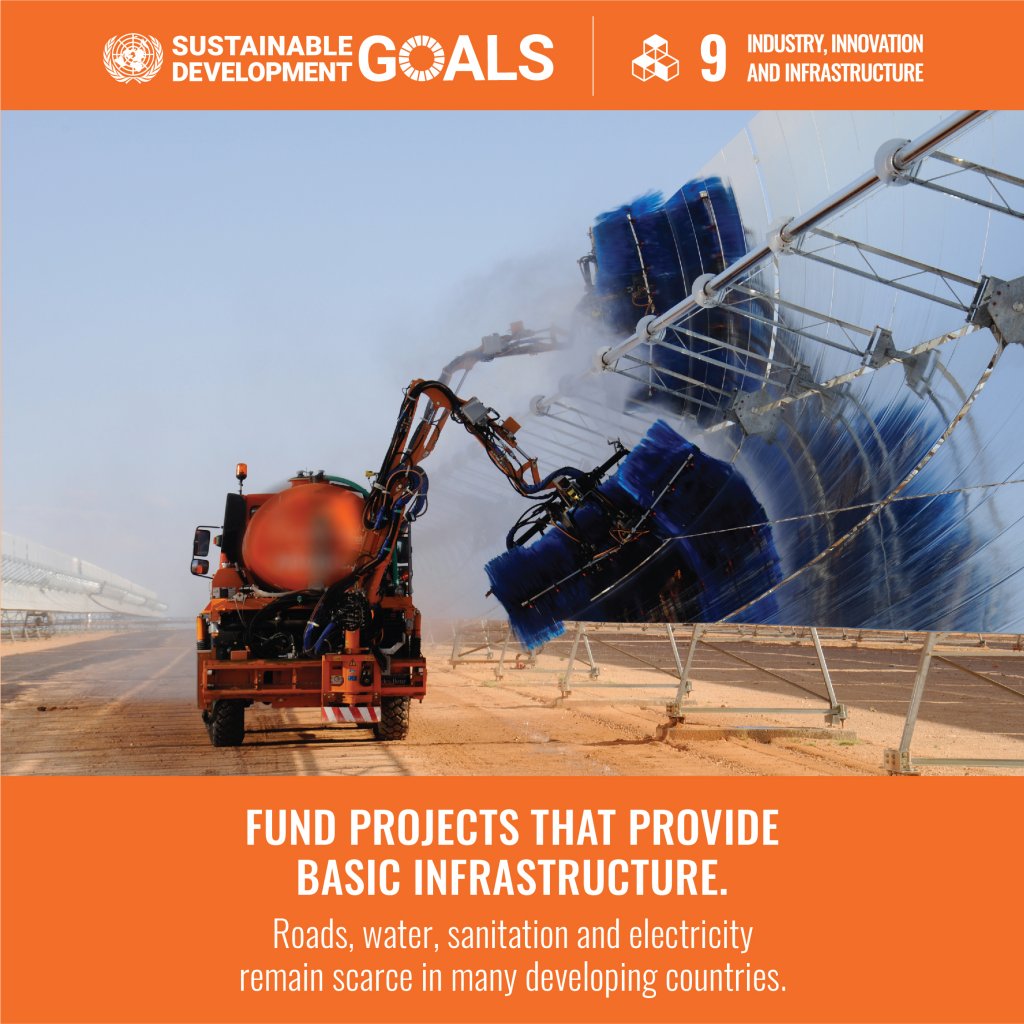
Rotary Club of Newport Beach
Global Sustainability Committee
Democracy in a Box-Positive Peace-Well Functioning Government
HIAB-Educating Girls 2025
- SG’s Strategy on New Technologies
- UN Development Programme
- UN Environment Programme
- UN Habitat
- UN Office for Disaster Risk Reduction
- UN Industrial Development Organization
- How industrial development matters to the well-being of the population
- Industrial Development Report of UNIDO
- International Telecommunication Union
- UN Office for Project Services
- International Civil Aviation Organization
- Develop quality, reliable, sustainable and resilient infrastructure, including regional and transborder infrastructure, to support economic development and human well-being, with a focus on affordable and equitable access for all
- Promote inclusive and sustainable industrialization and, by 2030, significantly raise industry’s share of employment and gross domestic product, in line with national circumstances, and double its share in least developed countries
- Increase the access of small-scale industrial and other enterprises, in particular in developing countries, to financial services, including affordable credit, and their integration into value chains and markets
- By 2030, upgrade infrastructure and retrofit industries to make them sustainable, with increased resource-use efficiency and greater adoption of clean and environmentally sound technologies and industrial processes, with all countries taking action in accordance with their respective capabilities
- Enhance scientific research, upgrade the technological capabilities of industrial sectors in all countries, in particular developing countries, including, by 2030, encouraging innovation and substantially increasing the number of research and development workers per 1 million people and public and private research and development spending
- Facilitate sustainable and resilient infrastructure development in developing countries through enhanced financial, technological and technical support to African countries, least developed countries, landlocked developing countries and small island developing States 18
- Support domestic technology development, research and innovation in developing countries, including by ensuring a conducive policy environment for, inter alia, industrial diversification and value addition to commodities
- Significantly increase access to information and communications technology and strive to provide universal and affordable access to the Internet in least developed countries by 2020.
Inclusive and sustainable industrialization, together with innovation and infrastructure, can unleash dynamic and competitive economic forces that generate employment and income. They play a key role in introducing and promoting new technologies, facilitating international trade and enabling the efficient use of resources.
However, the world still has a long way to go to fully tap this potential. Least developed countries, in particular, need to accelerate the development of their manufacturing sector if they are to meet the 2030 target, and scale up investment in scientific research and innovation.
Global manufacturing growth has been steadily declining, even before the outbreak of the COVID-19 pandemic. The pandemic is hitting manufacturing industries hard and causing disruptions in global value chains and the supply of products.
Innovation and technological progress are key to finding lasting solutions to both economic and environmental challenges, such as increased resource and energy-efficiency. Globally, investment in research and development (R&D) as a proportion of GDP increased from 1.5 per cent in 2000 to 1.7 per cent in 2015 and remained almost unchanged in 2017, but was only less than 1 per cent in developing regions.
In terms of communications infrastructure, more than half of the world’s population is now online and almost the entire world population lives in an area covered by a mobile network. It is estimated that in 2019, 96.5 per cent were covered by at least a 2G network.
COVID-19 response
Information and communication technologies have been on the frontlines of the COVID-19 response. The crisis has accelerated the digitalization of many businesses and services, including teleworking and video conferencing systems in and out of the workplace, as well as access to healthcare, education and essential goods and services.
As the pandemic reshapes the way in which we work, keep in touch, go to school and shop for essentials, it has never been more important to bridge the digital divide for the 3.6 billion people who remain offline, unable to access online education, employment or critical health and sanitation advice. The 2020 Financing for Sustainable Development Report provides policy options to harness the potential of digital technologies.
Once the acute phase of the COVID-19 crisis is over, governments will need investments in infrastructure more than ever to accelerate economic recovery, create jobs, reduce poverty, and stimulate productive investment.
The World Bank estimates that developing countries need to invest around 4.5 per cent of GDP to achieve the Sustainable Development Goals and at the same time limit global warming to no more than 2 degrees Celsius.
The coronavirus pandemic has revealed the urgent need for resilient infrastructure. The Asian Development Bank notes that critical infrastructure in the region remains far from adequate in many countries, despite the rapid economic growth and development the region has experienced over the past decade. The Economic and Social Survey of Asia and the Pacific highlights that making infrastructure resilient to disasters and climate change will require an additional investment of $434 billion per year. This sum may need to be even greater in some subregions, such as the Pacific small island developing states.

